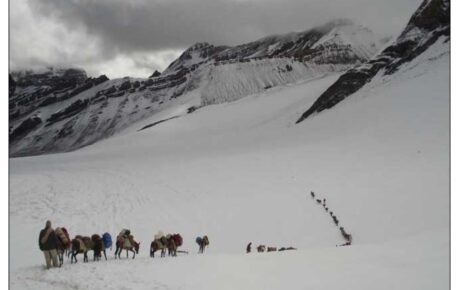A severe winter storm is currently wreaking havoc in many southern states of the United States, particularly Texas. Temperatures in the state have plummeted to -18°C, triggering warnings from officials about an imminent disaster.
According to reports, the harsh winter conditions have left millions in the area without heat and water for over two days. Energy remains out for 2.7 million households, officials said. With freezing temperatures expected through the weekend, getting the lights back on will be a slow process, as Texas has lost 40% of its generating capacity, with natural gas wells and pipelines, along with wind turbines, frozen shut.
On Friday, frustrated Texans queued for hours for safe drinking after the unprecedented weather left millions shivering without power or clean water.
Hospitals in Houston, the state’s largest city, and elsewhere in Texas had reported that did not have water. Nearly two dozens deaths have been attributed to the cold snap and officials say they suspect many more people have died – but their bodies have not been discovered yet.
Apart from Texas, much of the United States is in the grip of bone-chilling weather. The National Weather Service (NWS) said an Arctic air mass had spread southward, well beyond areas accustomed to freezing weather, with winter storm warnings posted for most of the Gulf Coast region, Oklahoma and Missouri.
However, meteorologists had seen this extreme winter weather coming many weeks in advance. That’s because this extreme pattern was initiated by a recognisable phenomenon which unfolded in the Arctic at the beginning of the year called Sudden Stratospheric Warming (SSW).
SSW’s are a natural occurrence, which occur every couple of winters and portend extreme weather in the weeks following them. When the Arctic warms rapidly, it disrupts a spinning mass of cold air — the polar vortex — a semi-permanent weather system which is present each winter.
Normally the jet stream winds around the vortex and acts as a lasso of sorts, keeping the cold air trapped inside. But when it gets warm in the Arctic, the jet stream weakens and elongates, allowing the cold air to plunge south.




